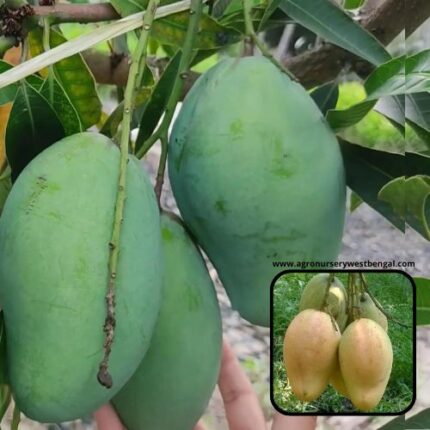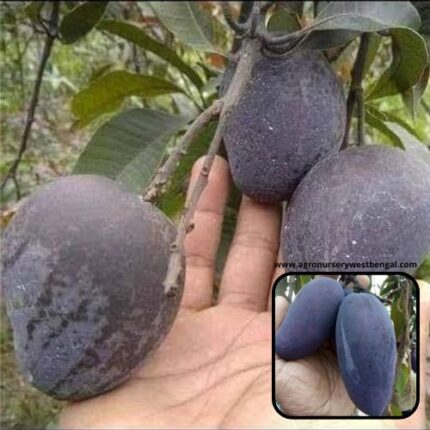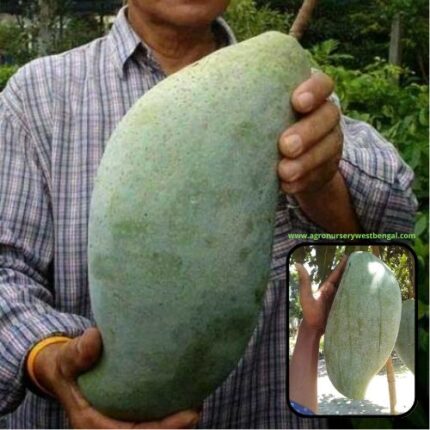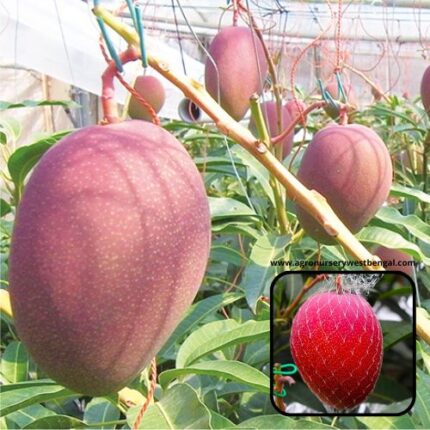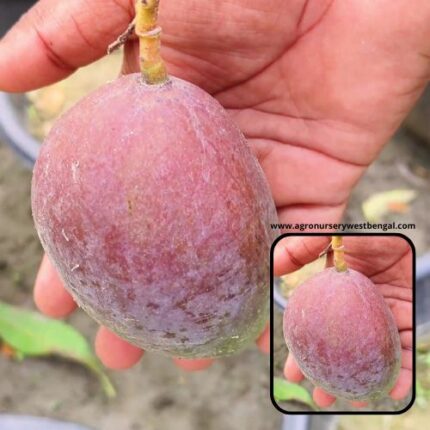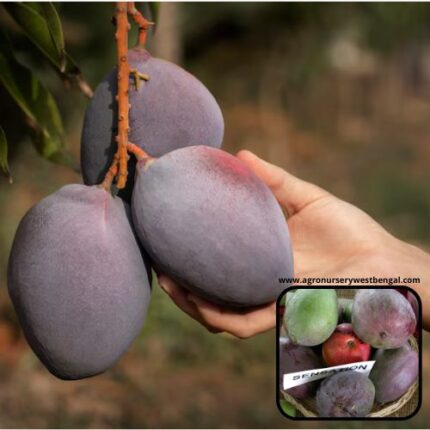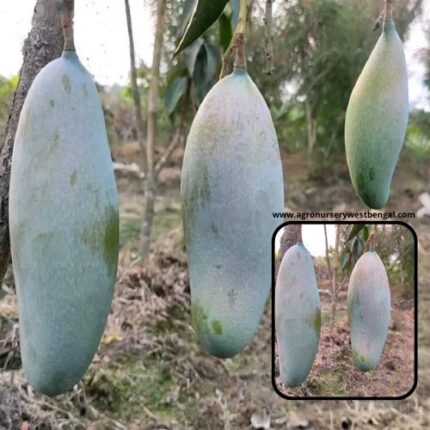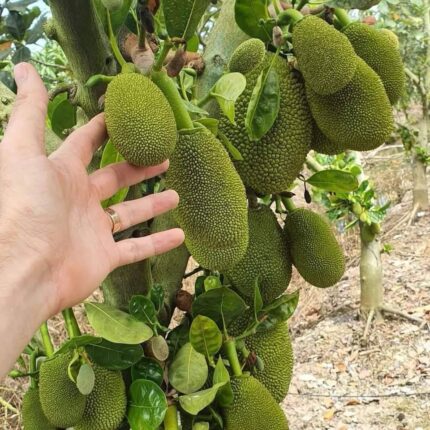
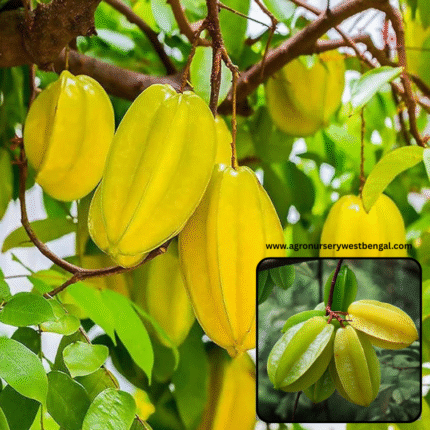
Thai wood Apple plants
₹899 Original price was: ₹899.₹499Current price is: ₹499.
The Wood Apple, scientifically known as Limonia acidissima (and often confused with Aegle marmelos, also called Bael fruit, which is a related but distinct species), is a peculiar and highly valued tropical fruit, especially in the Indian subcontinent and Southeast Asia.
Here’s a detailed description:
1. The Plant (Tree):
- Appearance: The wood apple tree is a medium to large deciduous tree, typically growing 9-20 meters (30-65 feet) tall with a spreading crown. It has a rough, thorny bark, and its branches are often covered with sharp spines.
- Leaves: The leaves are pinnate, with 5-7 leaflets, and emit a citrus-like scent when crushed.
- Flowers: The flowers are small (1.5-2 cm), pale green or yellowish, sweetly scented, and grow in short, drooping clusters.
2. The Fruit:
- External Appearance: The most striking feature of the wood apple is its appearance. It’s round to oval, 5 to 12.5 cm (2 to 5 inches) in diameter, and encased in an incredibly hard, woody, grayish-white to light brown rind that is about 6 mm (1/4 inch) thick. The surface is rough and textured, often described as looking like a “rotten coconut” or “small coconut.” It doesn’t split open when ripe.
- Opening the Fruit: Due to its extremely hard shell, the fruit cannot be opened by hand. It usually requires a strong blow from a hammer, rock, or machete to crack it open.
- Internal Appearance: Once opened, the fruit reveals a solid, dense pulp that ranges in color from ivory or yellow when young, transitioning to an orange-brown or dark brown hue as it ripens. The pulp has an unusual blend of textures: sticky, grainy, soft, jammy, mealy, moist, and subtly crunchy due to the presence of numerous small, white to dark brown, flattened-oblong seeds scattered throughout. These seeds are embedded in a transparent, adhesive mucilage that solidifies upon drying.
- Aroma: Ripe wood apples release a pungent, permeating, and polarizing aroma. Many describe it as a unique blend of blue cheese and raisins, or even an overripe banana mixed with rotten blue cheese. This strong smell can be off-putting to some but is often appreciated by those who enjoy the fruit.
3. Taste and Flavor Profile:
- The raw flesh of a ripe wood apple has a complex and distinctive taste. It is generally described as sweet, astringent, acidic, and sour, with musky, fermented, and tangy nuances. Some liken its flavor to tamarind, raisins, or sharp cheeses.
- The taste can be quite strong and polarizing; some love it, while others find it unusual or unpleasant. Adding sugar often balances its tartness, making it more palatable for many.
4. Ripeness:
- Determining ripeness by appearance alone is challenging due to the hard shell. A traditional method involves dropping the fruit from about 30 cm (1 foot); if it bounces, it’s not ripe; if it lands with a soft thud, it’s ready. Ripe fruits also emit a stronger aroma.
5. Culinary Uses:
- Fresh Consumption: The pulp can be scooped directly from the shell and eaten fresh.
- Beverages: It’s very popular for making juice or “sharbat” (a refreshing drink) by straining the pulp and mixing it with water, sugar, and sometimes coconut milk or spices like cardamom.
- Desserts: Used in ice creams, jams, jellies, and toffees.
- Savory Dishes: In some regions, especially in Gujarat, India, the pulp is used to make chutneys, often with green chili, sugar, and salt.
- Drying and Powdering: The pulp can be dried and powdered for year-round use, preserving much of its nutritional value.
6. Nutritional and Medicinal Value:
- Wood apple is highly nutritious, rich in fiber, carbohydrates, protein, iron, calcium, phosphorus, and vitamins B (riboflavin, thiamine) and C. It also contains beta-carotene (a precursor to vitamin A).
- It is widely used in traditional medicine systems like Ayurveda for its numerous health benefits. It’s known for aiding digestion, relieving constipation and dysentery, boosting the immune system, regulating blood sugar, and supporting liver and cardiovascular health. It also has antioxidant, anti-inflammatory, and antimicrobial properties.
7. Cultural Significance (especially in India):
- The Aegle marmelos species (Bael fruit), which is closely related to Limonia acidissima (Wood Apple), holds immense sacred significance in Hinduism, particularly associated with Lord Shiva. Its leaves (known as “bilva patra”) are considered sacred and are often offered during religious rituals. While Limonia acidissima doesn’t share the same direct sacred association, it is also highly valued for its medicinal properties in traditional practices across the region.
In summary, the Wood Apple is a unique tropical fruit, instantly recognizable by its hard, woody shell and aromatic, distinctively flavored pulp. It’s a nutritional powerhouse with a rich culinary and medicinal history in its native regions


